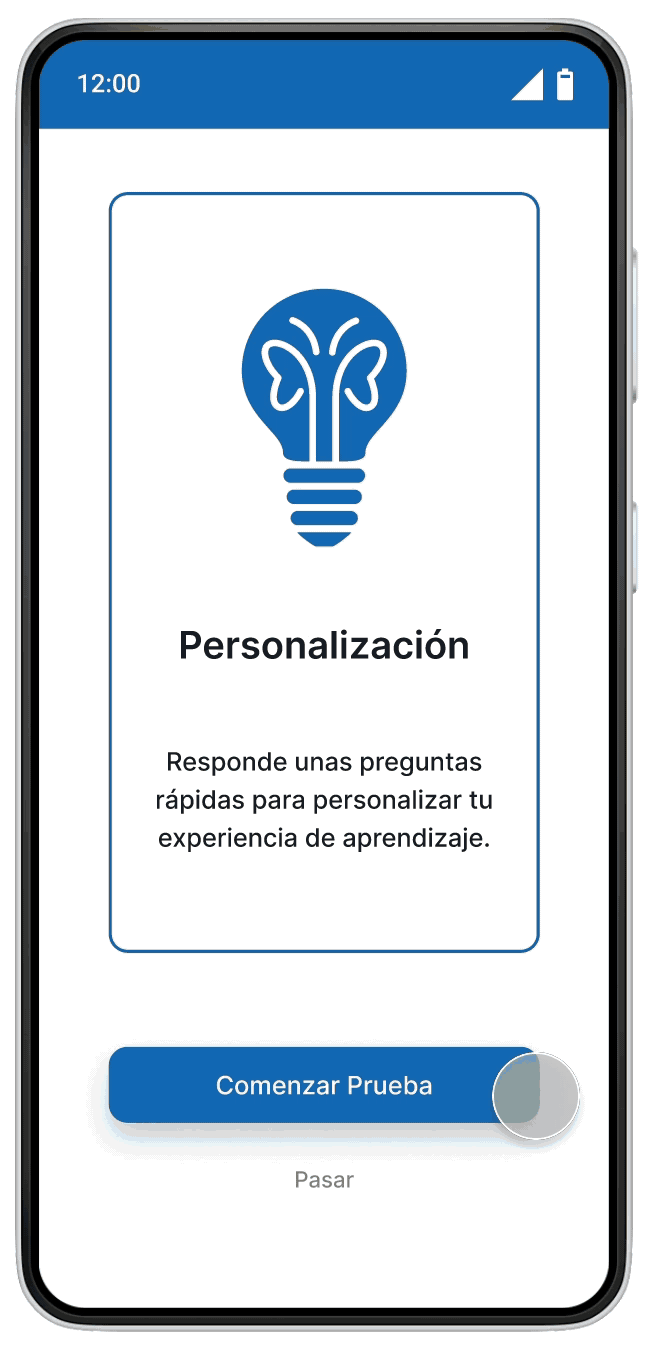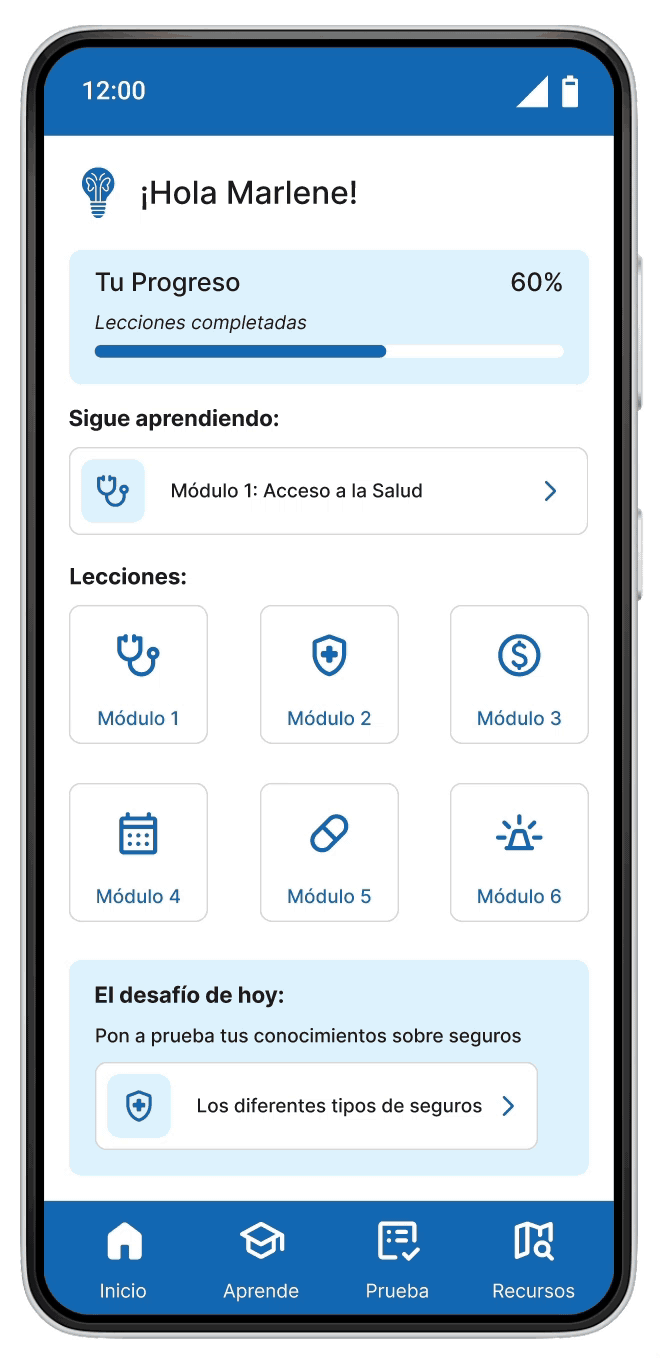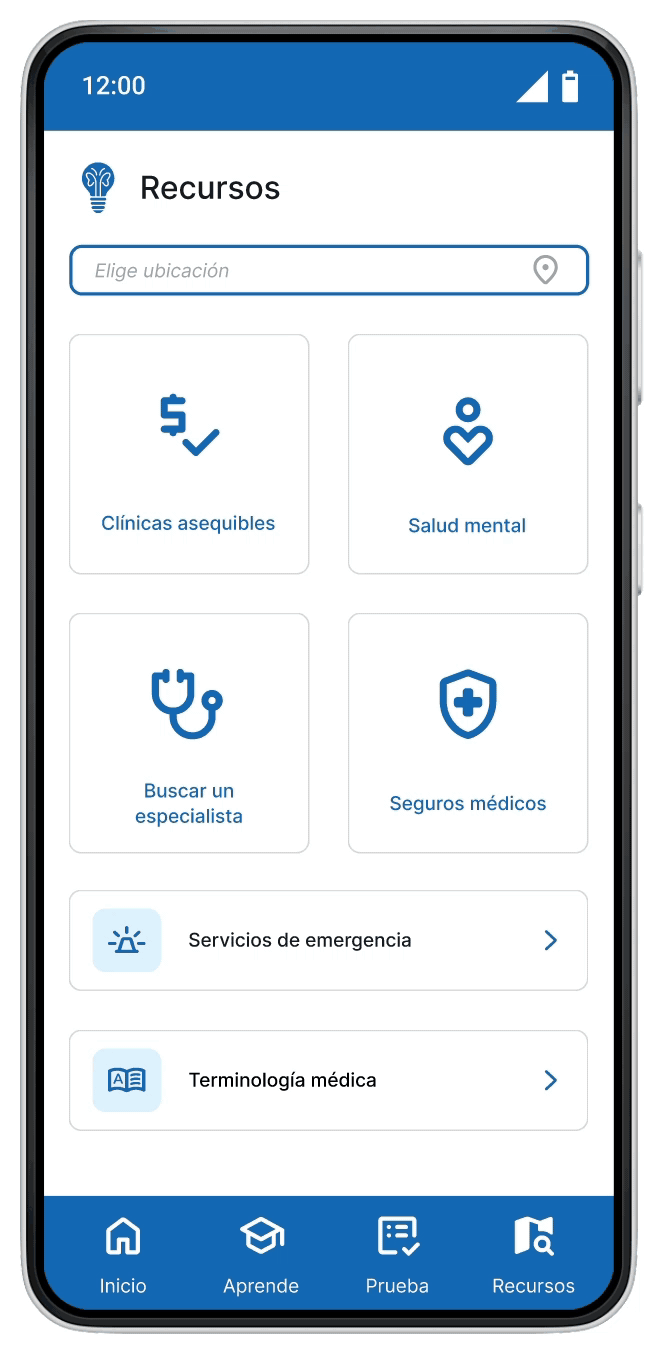PROBLEM STATEMENT:
Starting a new life in another country is never easy — especially when you don’t speak the language.
For Hispanic immigrants, nearly 50% say the process of getting medical care in the U.S. is difficult to understand. Everyone needs medical care, but how do you access it when you don’t know where to go, what terms like “PPO” or “deductible” mean, or how to even begin?
SOLUTION:
When direct translations don’t exist, comparison becomes one of the most powerful ways to learn. That’s how MiGuí bridges the gap — by teaching through relatable examples that make the U.S. healthcare system easier to understand.
.png)
DESIGN PROCESS:





USER RESEARCH:

21 Survey Responses
From Hispanic immigrants aged 18-64

20+ Articles & Studies Reviewed
To understand the plight of Hispanic immigrants, their concerns, and their statistics

Interview with participant

4 In-Depth Interviews
With Hispanic immigrants who arrived in the U.S. within the last 5 years

Keys Insights
-
Users learn best through comparisons
-
Spanish language support is essential
-
Users need clear guidance

Interview questions

Results from interviews
UNDERSTANDING USERS:
Question: Why did you move to the United States?

*English translations of interview responses
WIREFRAMES:
.png)
KEY FEATURES

1. Start With What You Know
Through research and interviews, I noticed a consistent pattern in how immigrants learn: many rely on comparisons to understand unfamiliar concepts. Given that the U.S. is the only developed country without universal healthcare, its system can be especially difficult to grasp. To make my app more effective, I combined these insights and developed the idea of personalized learning. Users start with a short quiz that identifies their country of origin, allowing the app to compare their native healthcare system with that of the U.S. Once confirmed, their lessons are tailored with familiar examples, making complex information more accessible and relatable.
2. Accessibility via Language
During interviews, many participants shared concerns about the language barrier, with most speaking little to no English. They found it difficult to access information about the U.S. healthcare system in their native language. In fact, 70% of survey respondents said it was important for the app to be available in Spanish. As a result, I designed the app primarily in Spanish, with English translations included to help users learn key terminology. Lessons feature English terms alongside Spanish translations, allowing users to understand and recognize important healthcare vocabulary in both languages.


3. Find the Care You Deserve
The United States has the most expensive healthcare system in the world, and about 55% of Hispanic immigrants remain uninsured—making them far less likely to receive medical care. The high cost of treatment and the complexity of insurance plans often create fear and discourage access. Access to healthcare is a right, not a privilege, which is why I created a resources page in the app. It includes a search tool to help users locate free and affordable clinics based on their location. The page also provides guidance on finding healthcare specialists, mental health services, and insurance options. Additional sections offer information on emergency services and key medical terminology.
.png)